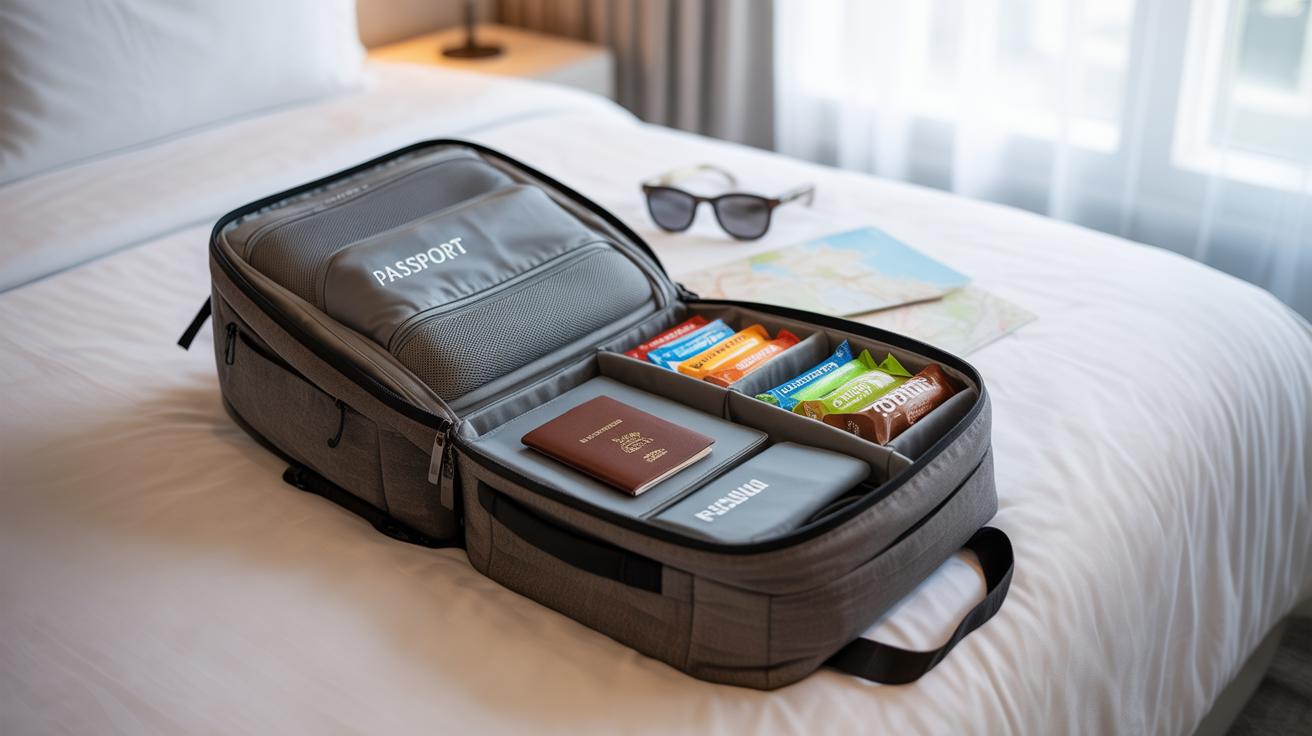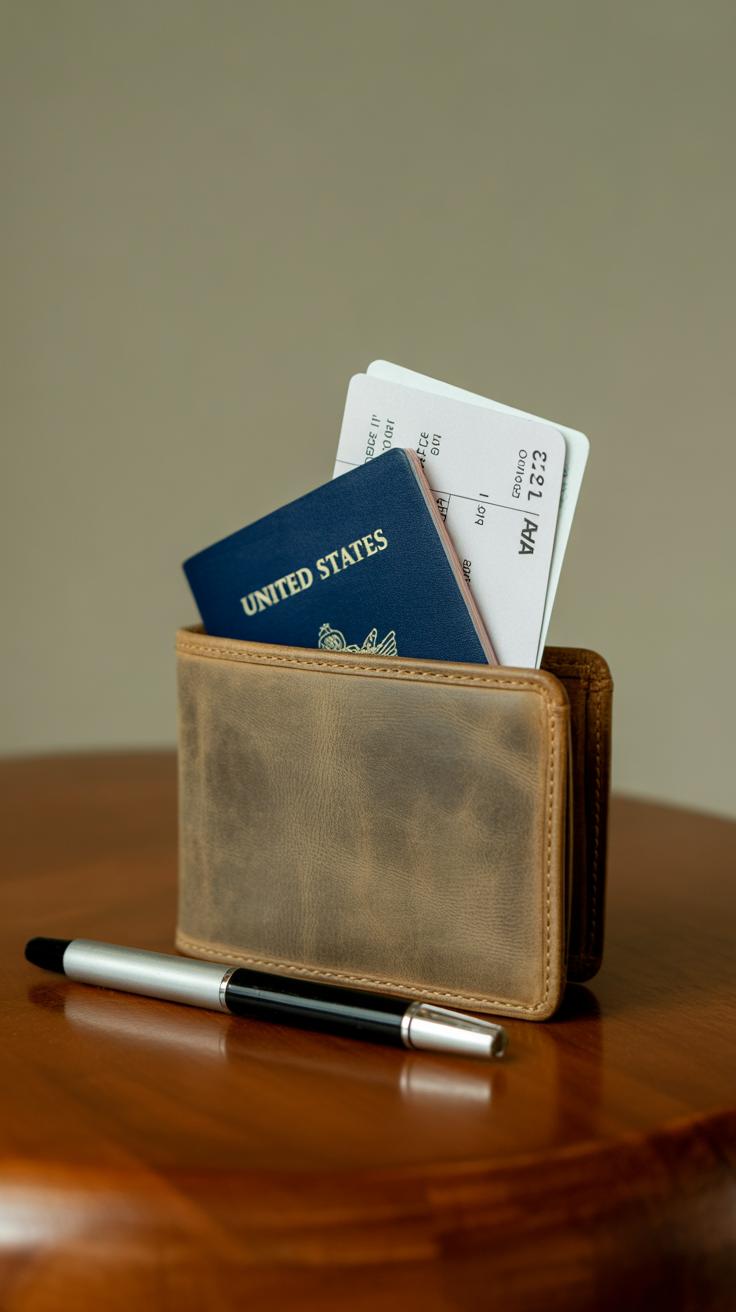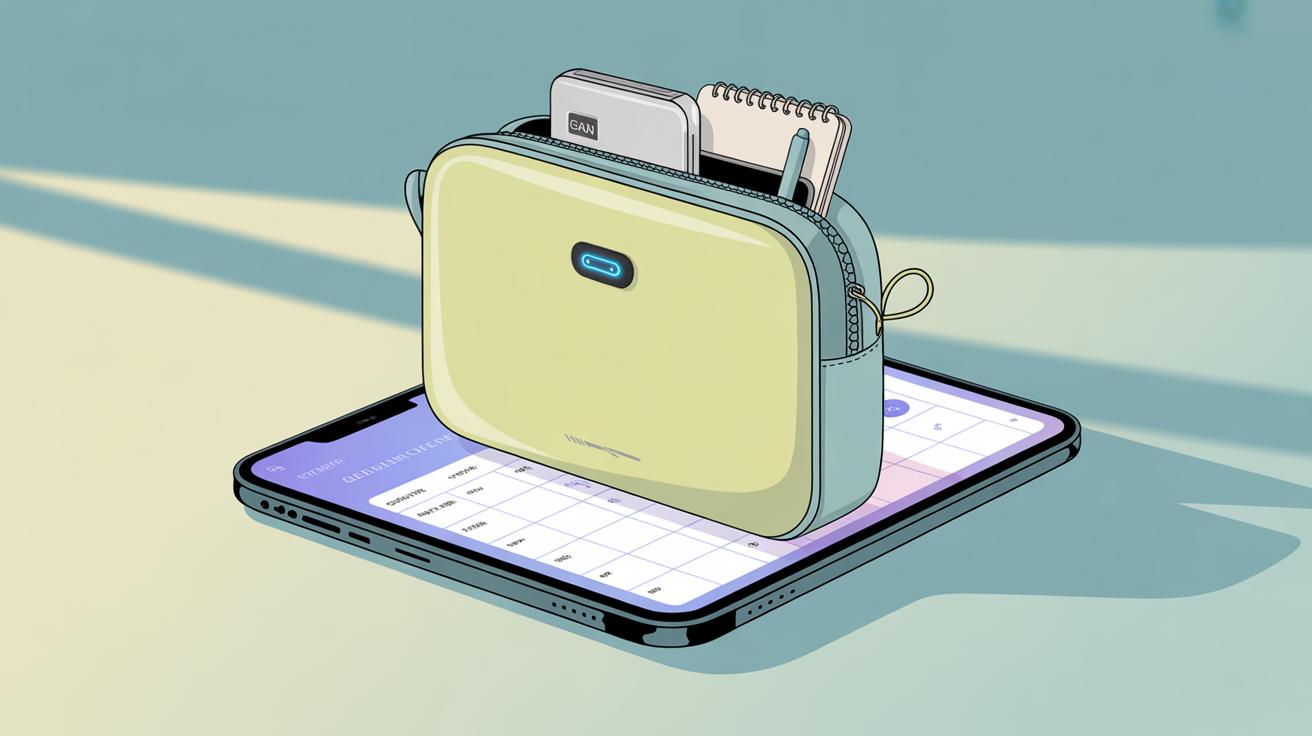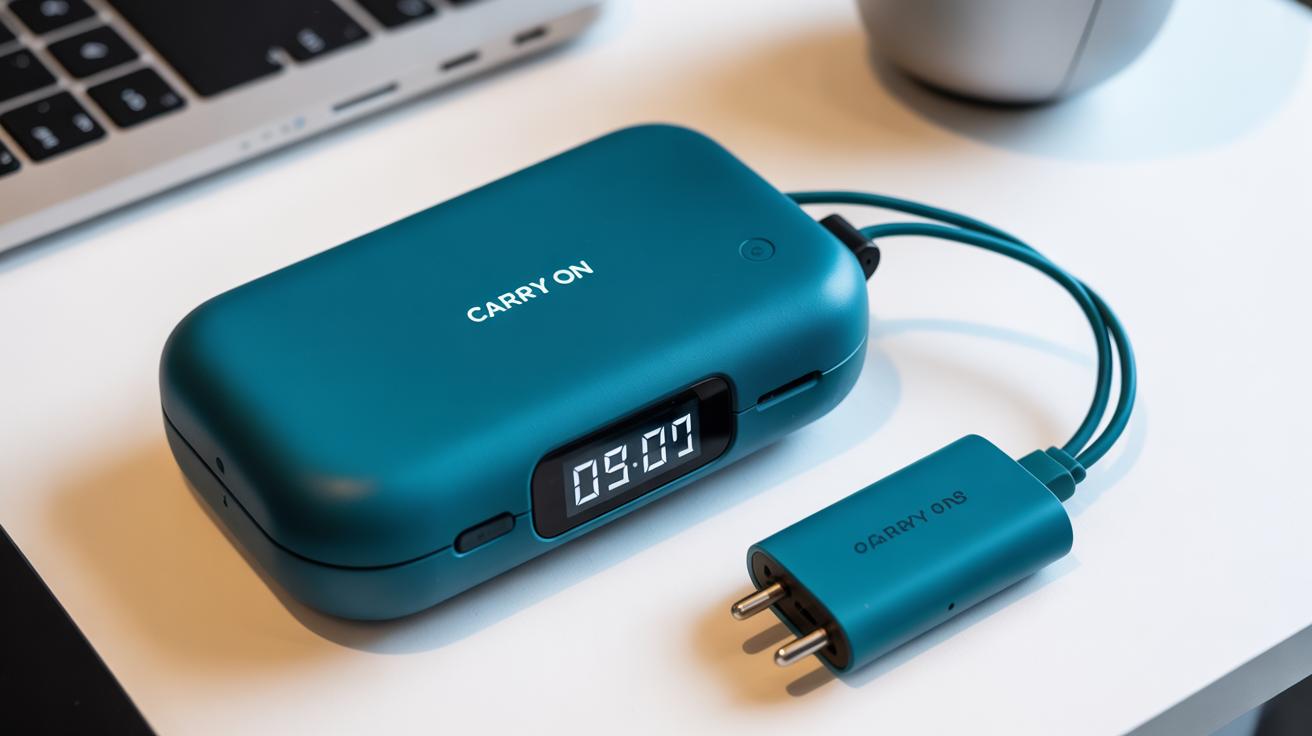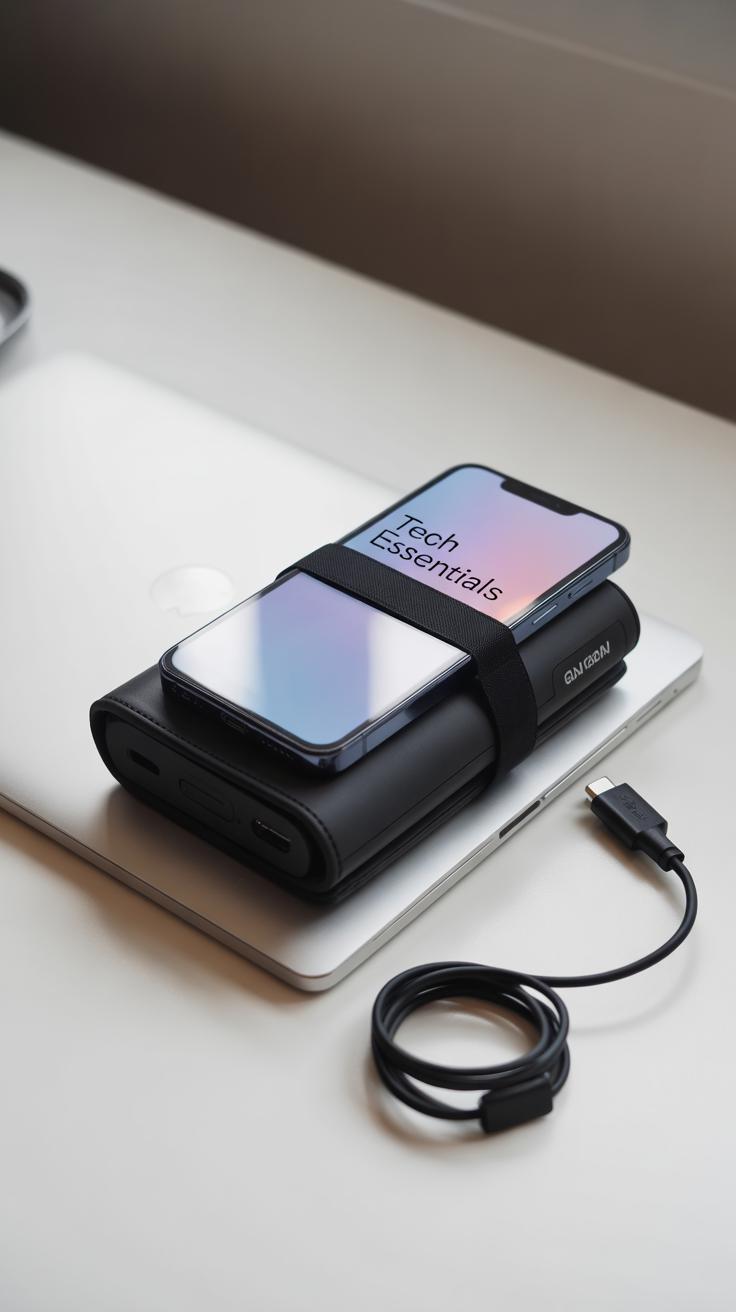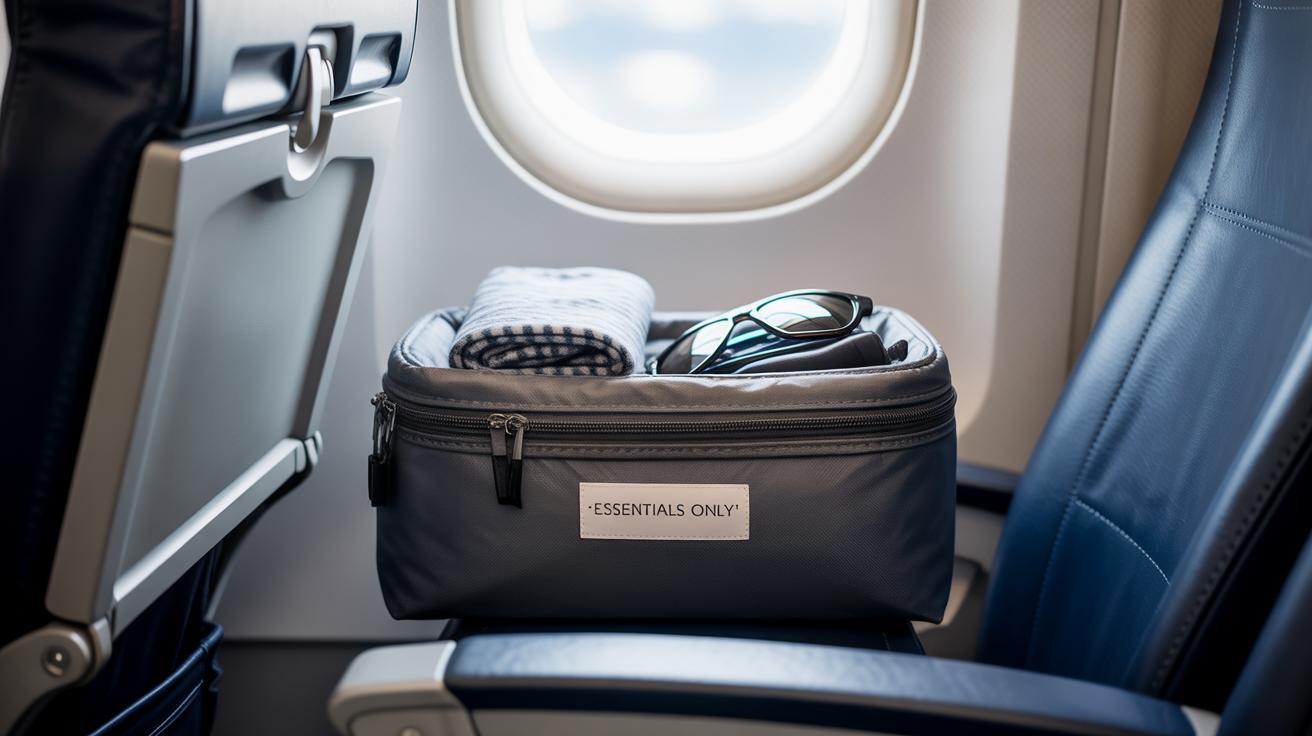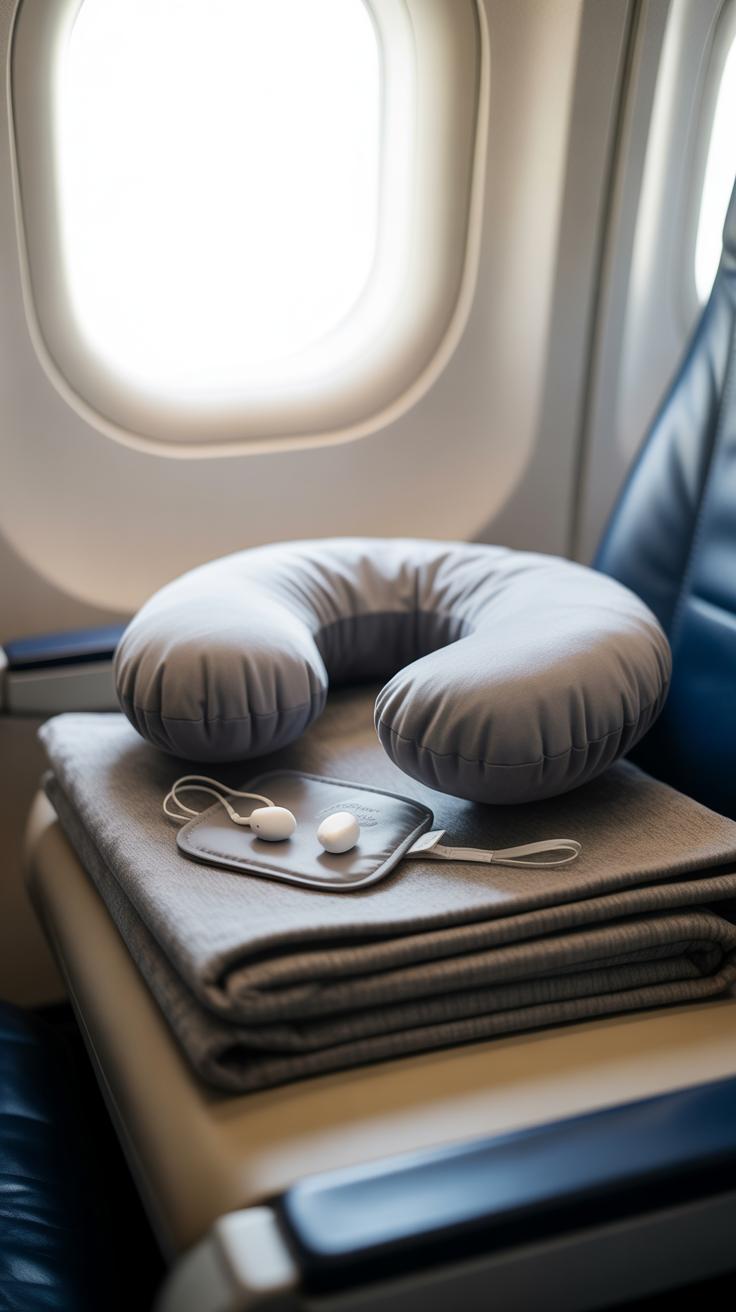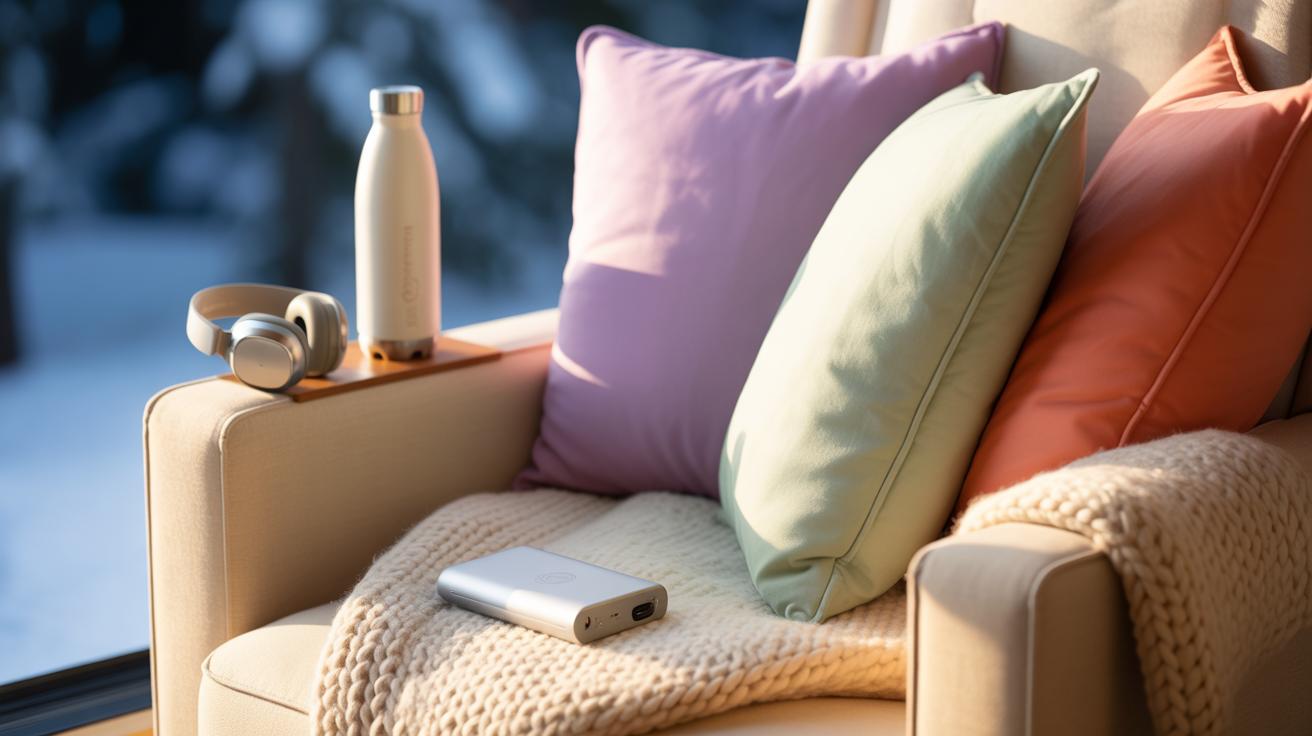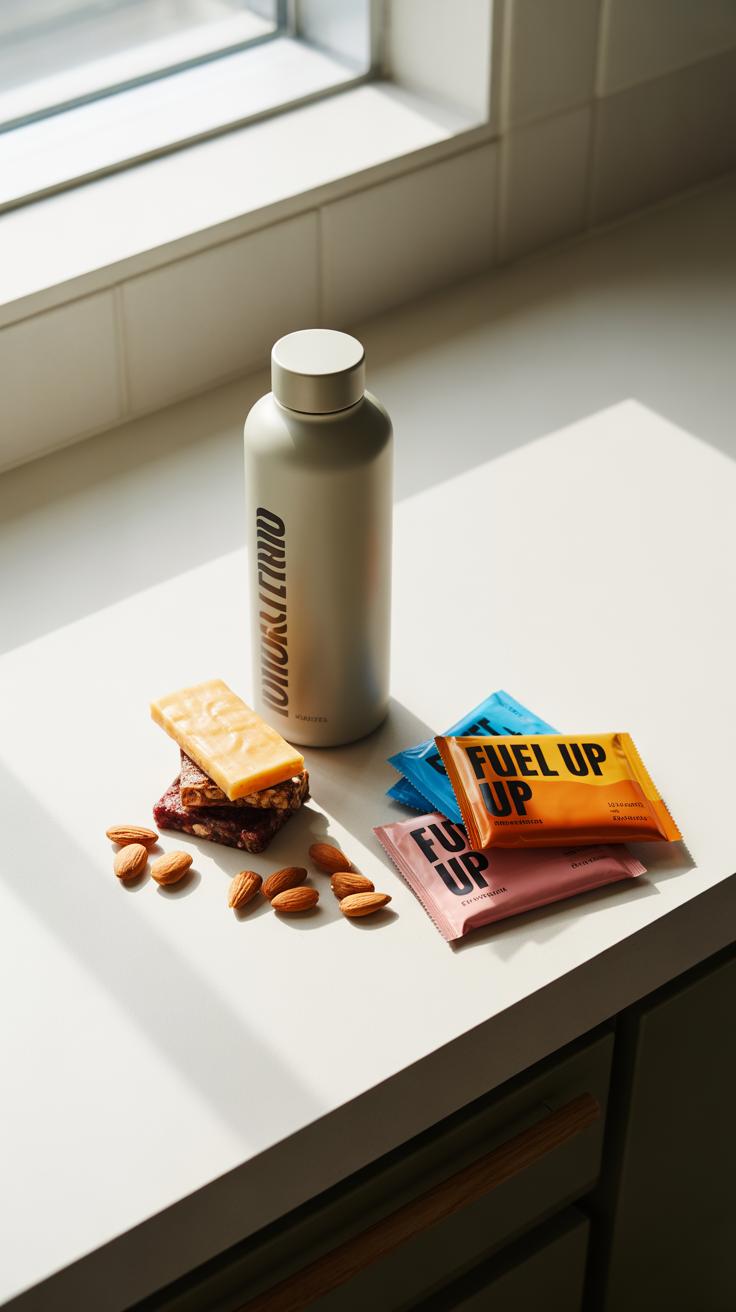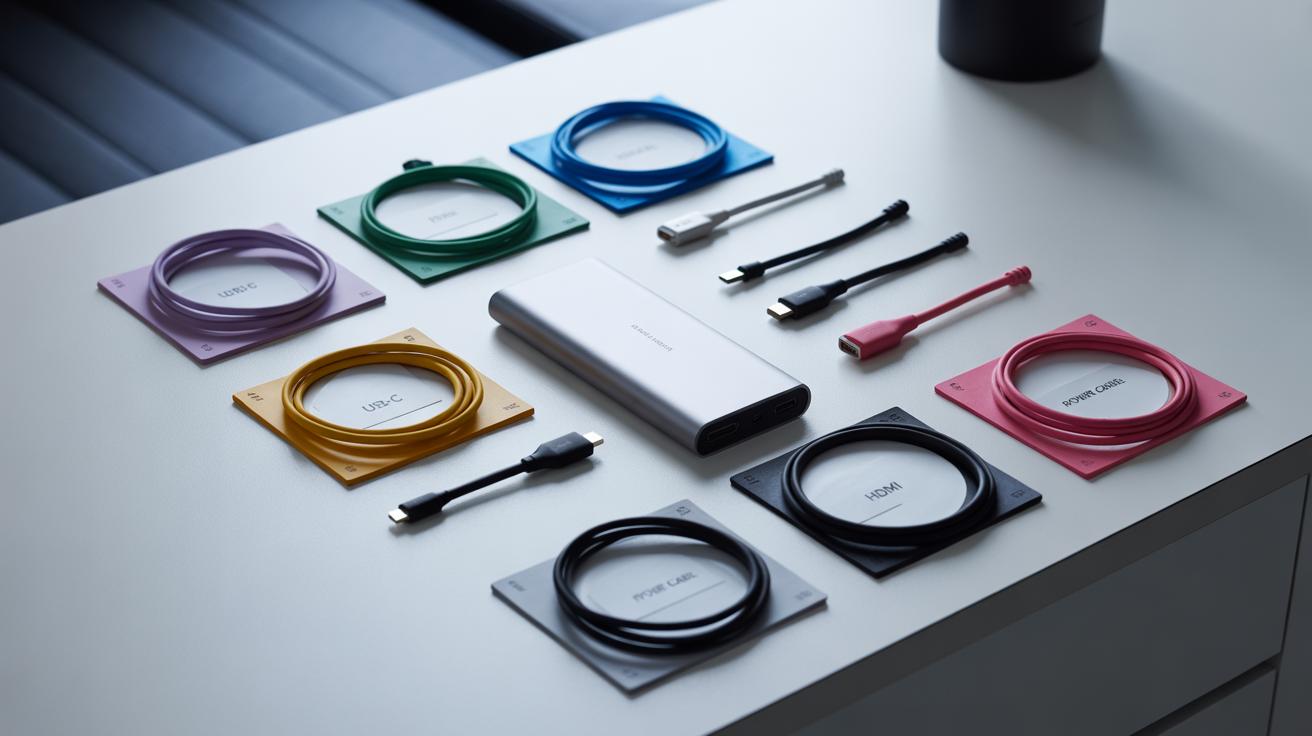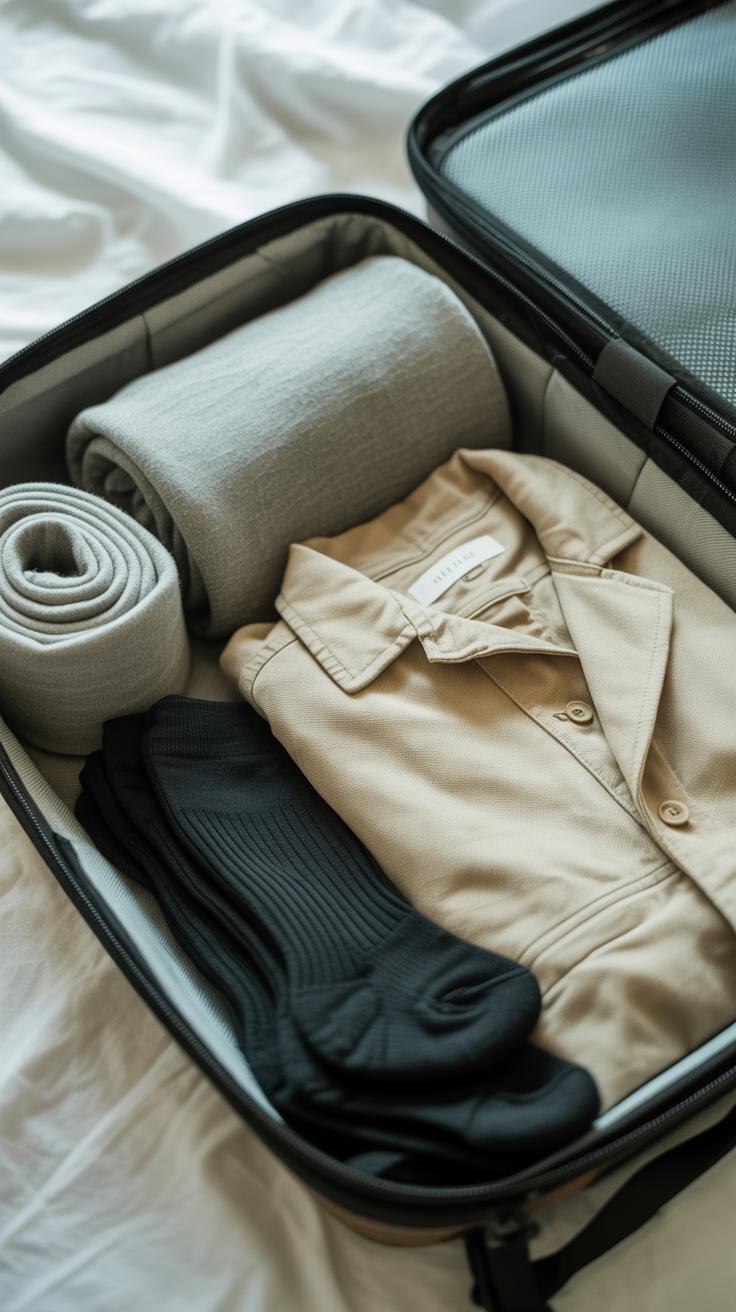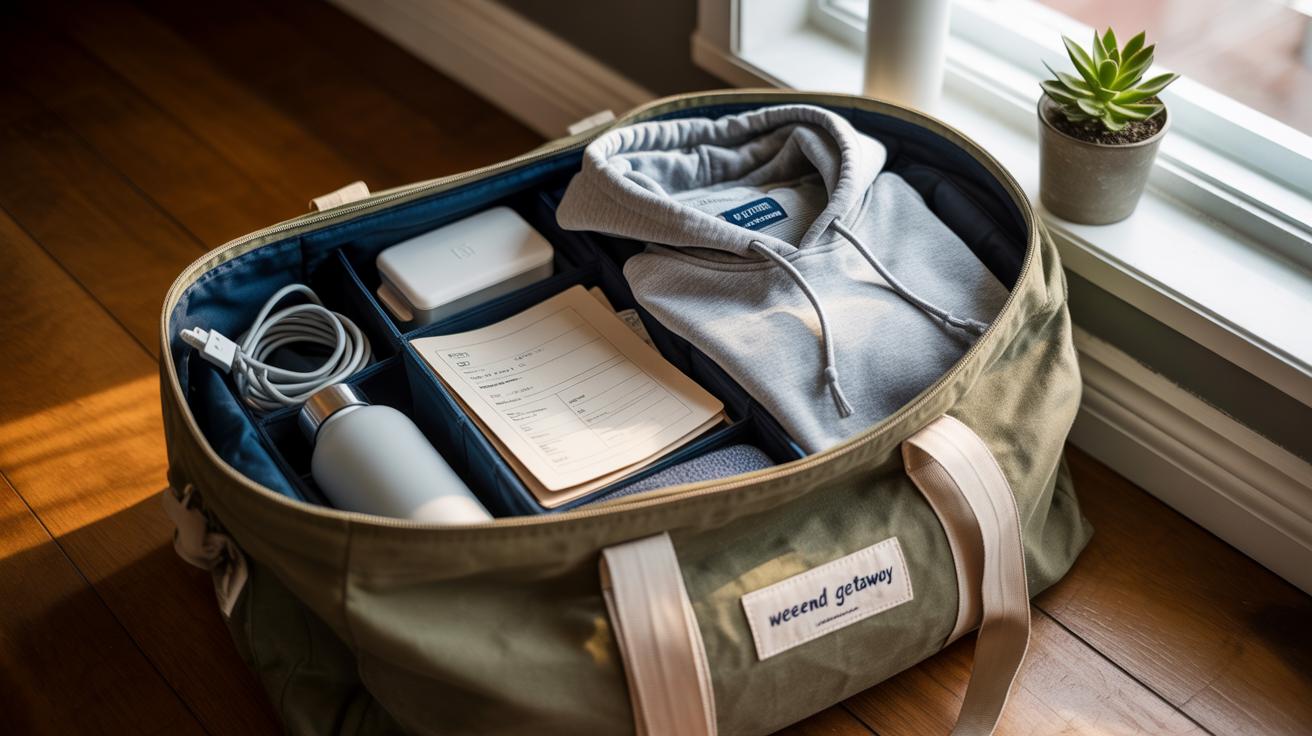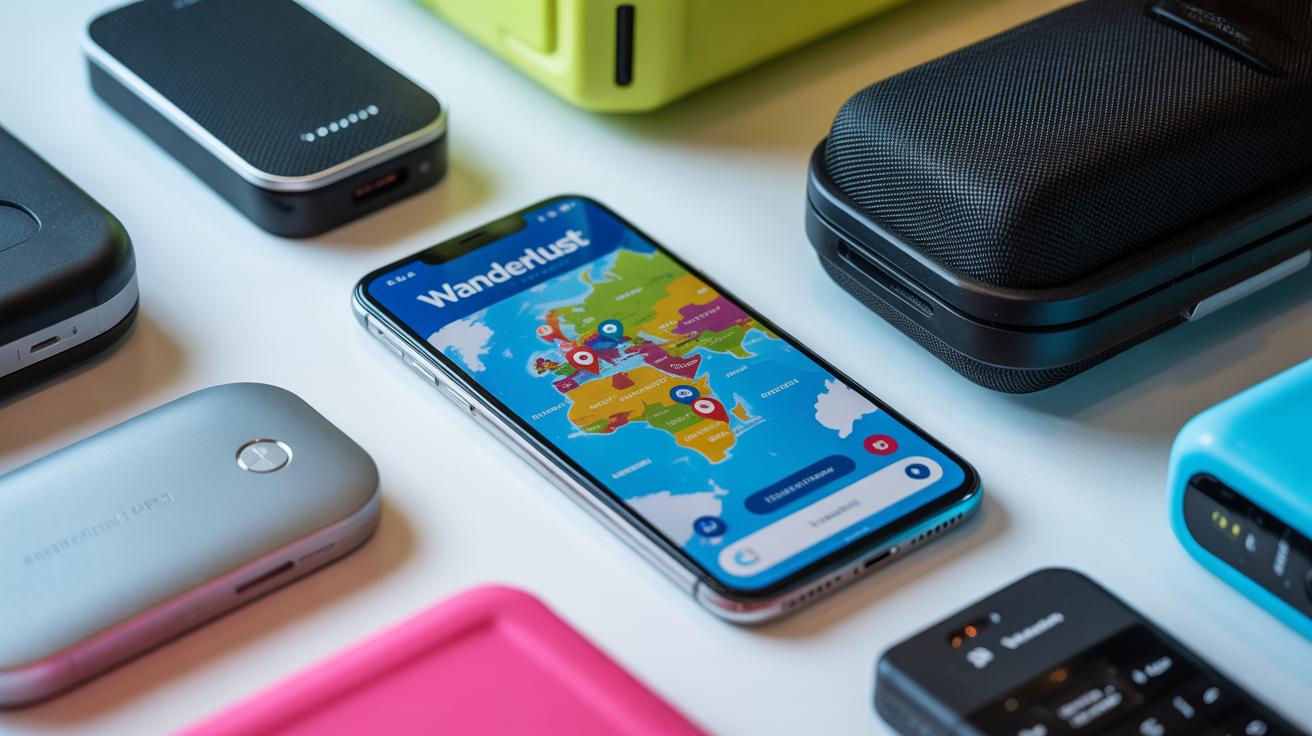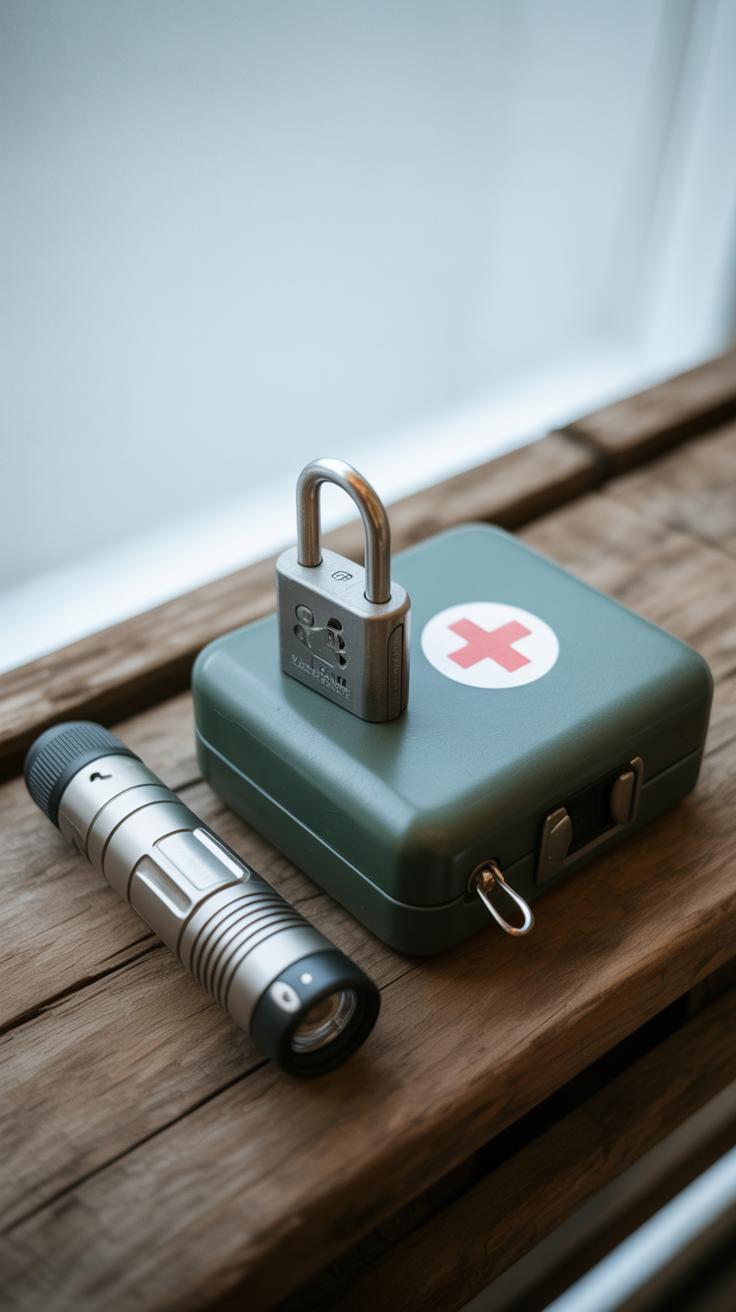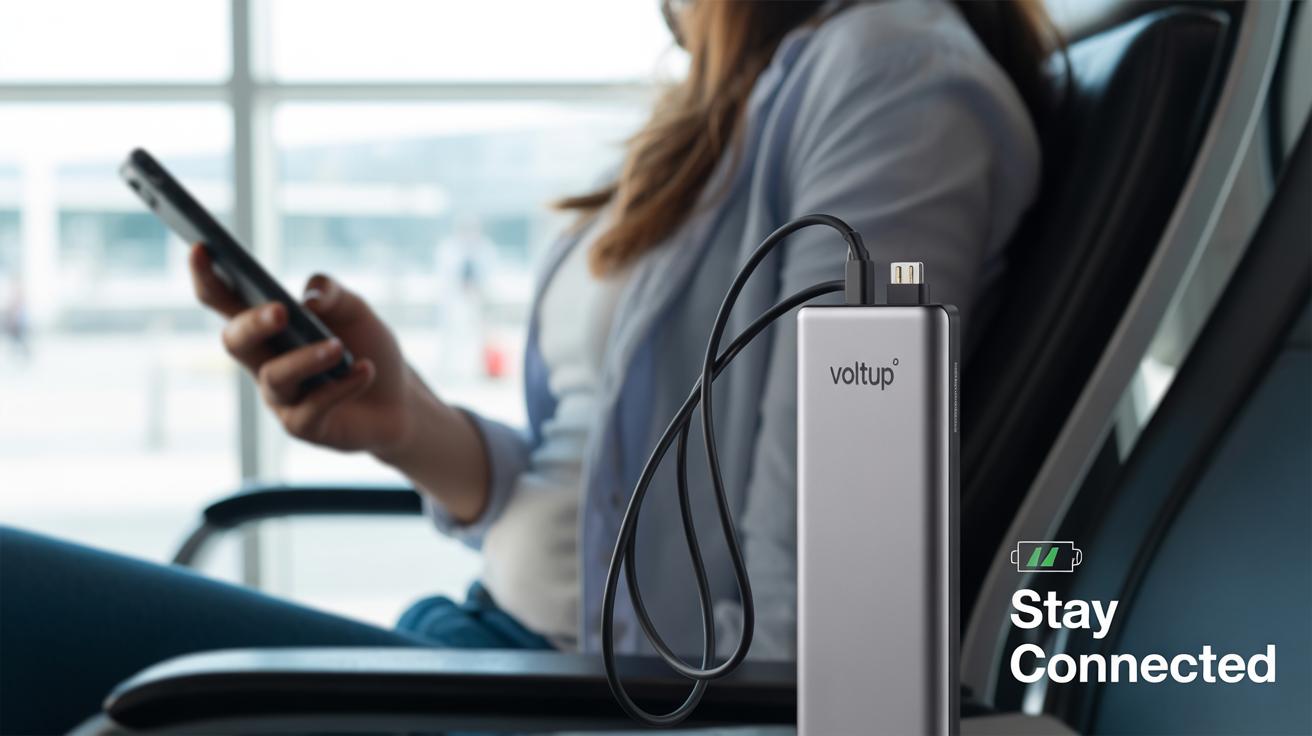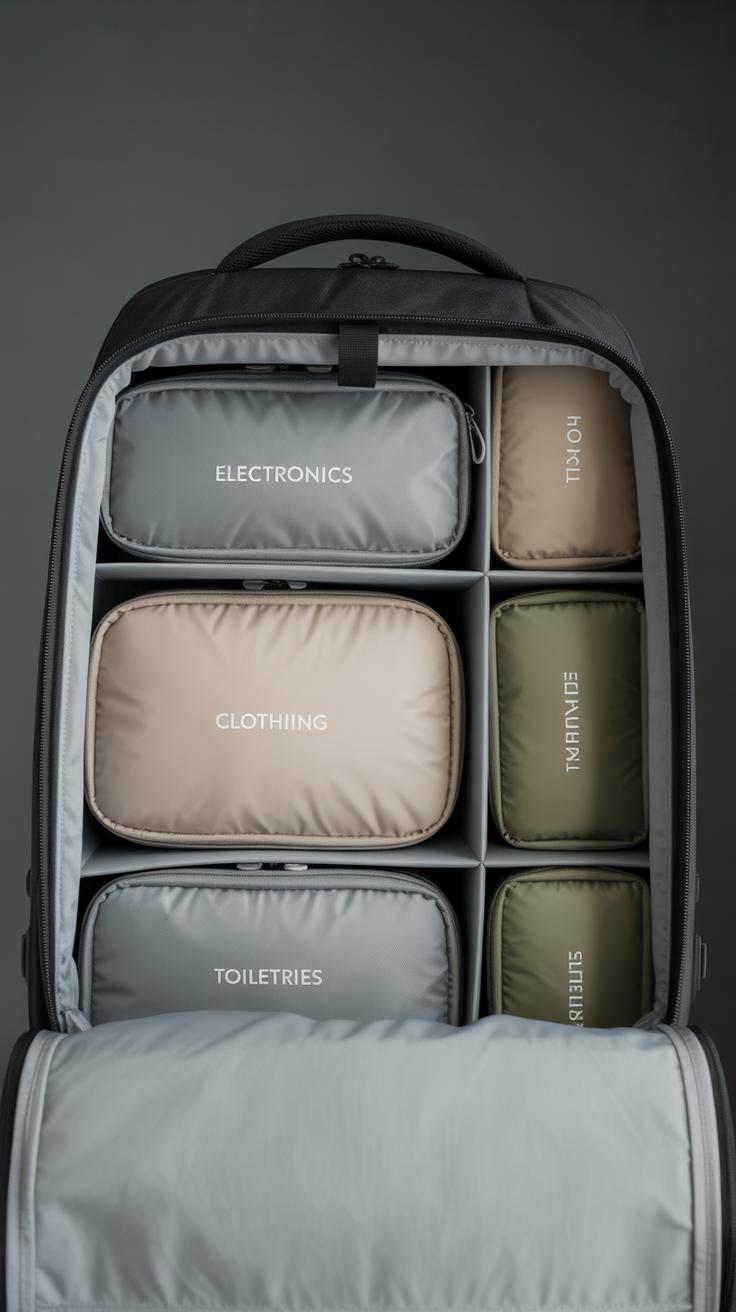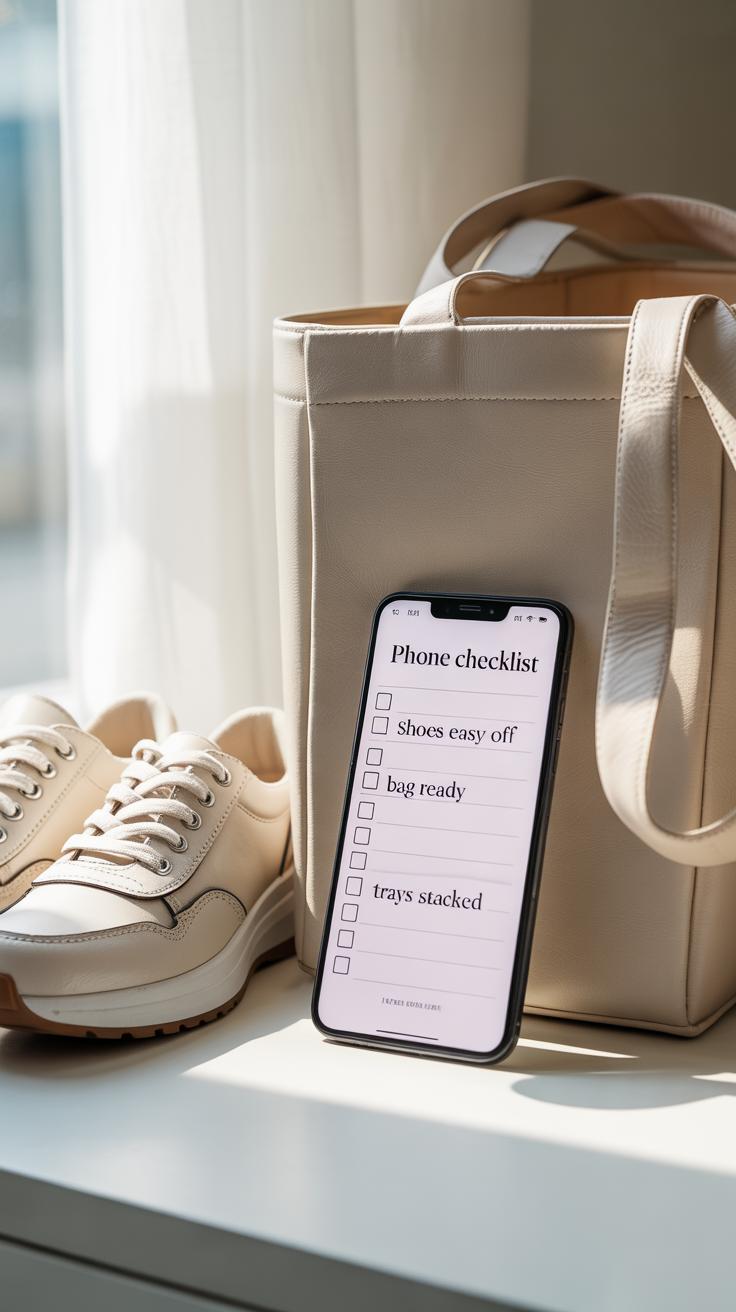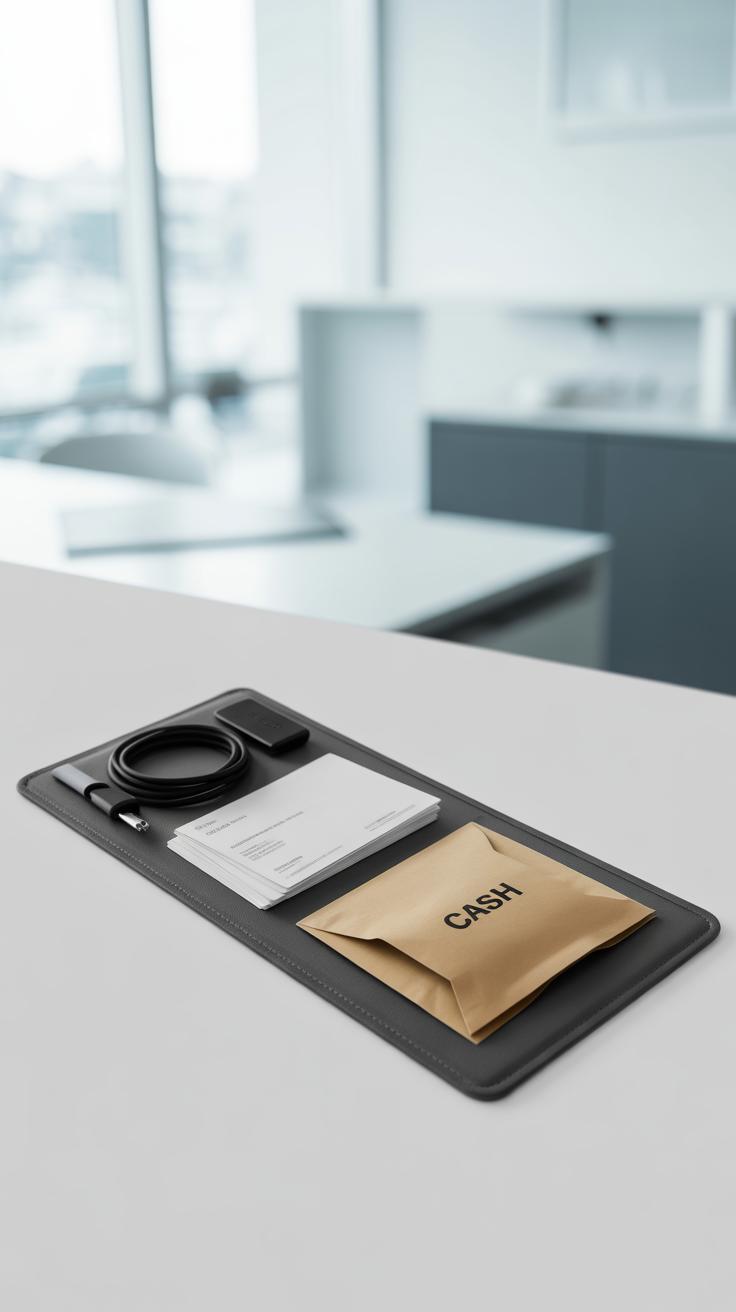Introduction
Traveling internationally requires careful planning, especially when it comes to packing. Your backpack holds everything you need for the journey, so it’s important to pack smart. Knowing what essentials to bring can save you time and stress at airports and keep you comfortable during flights and your trip.
This article explores the essential items you’ll need for international flights. From important documents to personal comfort items, you’ll learn how to pack efficiently. We’ll also look at ways to organize your backpack so you can access items easily and avoid overpacking. Follow this guide to become a confident and prepared traveler.
Important Travel Documents
When you’re gearing up for an international flight, some documents can’t just be tucked away somewhere deep in your backpack. You need them close, handy, maybe even a bit obsessively so. These papers and cards prove who you are and that you have permission to enter another country. Without them, well—you’re stuck. At the very least, you waste a lot of time scrambling.
Most travelers carry a few core papers:
- Your passport—basically your global ID.
- Visa documents if your destination requires one.
- Boarding passes—whether printed or digital.
- Any additional forms required by airlines or governments, like health declarations or customs forms.
It sounds simple, but keeping these in an organized, accessible spot in your backpack saves a lot of stress at airports. Messing around with your bag every time you need to show papers just slows things down. I’ve seen people rummage through layers of stuff, looking panicked. You don’t want to be that person.
Passport and Visa Requirements
Your passport is the single most crucial document. Forget it, and you’re grounded, no matter how ready your backpack is. Make sure it’s valid for the time required by the country you’re visiting—sometimes six months minimum is the rule. Don’t trust your memory here; double-check before you fly.
Visas are trickier because rules differ dramatically. Some countries waive visas for short stays, others insist on complicated applications. Keep visa papers separate but close to your passport—something many people overlook. Also, carrying your passport in a secure but easy-to-access place, like a travel wallet or a backpack’s front pocket, helps during those security checks. I usually slip mine in a small pouch inside my backpack’s top compartment, which I can open without fully unpacking anything.
Boarding Pass and Other Paperwork
Boarding passes aren’t just tickets; they’re your proof of permission to board that flight. Airlines often require you to present them multiple times—from check-in to boarding gates—so losing or misplacing them isn’t an option.
Whether you prefer printed copies or digital versions on your phone, consider having a backup. Sometimes apps crash, or battery dies. I tend to bring a printed boarding pass just in case, tucked in with the passport.
Then there’s the rest: customs declarations, health forms, lounge passes, or travel insurance documents. Organize them in a simple folder or travel wallet within your backpack—somewhere you can reach without unloading everything. It might feel like overkill when you’re packing but believe me, when they ask for multiple documents at the airport, you’ll thank yourself for being prepared.
Electronics and Chargers
When packing for an international flight, you’ll want to think carefully about the devices that truly make your journey smoother. Your phone is almost always a must, not just for communication but also for entertainment, navigation at your destination, and often boarding passes. Tablets or e-readers come next, especially if you prefer a bigger screen or like to read without straining your eyes. I usually bring headphones too—noise-canceling if possible—because the constant hum of the plane can get tiring after a while.
But here’s a thought: sometimes less is more. Bringing too many gadgets can mean more chargers, more things to track, and more to worry about losing. For me, a phone, an e-reader, and headphones cover most of what I need.
Essential Devices to Carry
- Smartphone – your all-in-one for calls, apps, and entertainment.
- Tablet or e-reader – great for long reading sessions or movies without draining your phone’s battery.
- Noise-canceling headphones – they really help shut out engine noise and chatter.
- Portable power bank – indispensable if you want to keep phones charged without hunting for outlets mid-flight.
Organizing Chargers and Adapters
Keeping chargers and adapters organized can honestly be a bit of a hassle. What’s worked for me is dedicating a small pouch just for cables, power banks, and adapters. Wrapping cords carefully in loops avoids that annoying tangle. If you travel to multiple countries, packing a universal adapter is a good idea, though check if your charger supports the voltage range beforehand—sometimes you need a converter, but mostly adapters do the trick.
I also recommend charging everything fully before leaving the hotel or airport lounge, then packing chargers in an easily reachable compartment. Otherwise, finding that phone charger buried at the bottom of a backpack brings unnecessary stress during a flight layover, trust me. While some travelers bring multiple chargers “just in case,” I think simplicity saves space and weight. You might prefer backup chargers; I haven’t decided if it’s worth the extra bulk yet.
Comfort and Sleep Aids
Travel Pillows and Blankets
If you’ve ever tried to sleep upright in a cramped airplane seat, you know the struggle is real. Travel pillows can make a difference—especially those shaped to support your neck without making you too stiff. Memory foam pillows often get praise for holding their shape, but some people find inflatable ones easier to pack and adjust. You might have to try a couple before finding the one that suits your own sleeping style. Packing a compact, lightweight blanket is another smart move. Airlines sometimes offer blankets, but they’re not always clean or available, so having your own small fleece or microfiber blanket can keep you warm and comfortable without taking too much room in your bag.
Consider how bulky these items are. Inflatable pillows can save space but may puncture, while soft travel blankets fold down easily but add a bit of weight. For me, I found a thin, soft travel blanket that doubles as a scarf when I’m not using it in-flight—a small win for multitasking.
Earplugs and Eye Masks
Noise and light are two of the biggest enemies of rest on planes. Earplugs, whether foam or silicone, block out the constant hum of engines and the chatter around you better than headphones alone. But they can be uncomfortable if worn too long. I remember on one flight, after a few hours, my ears just felt blocked and itchy. Still, they helped me catch a few decent naps.
Eye masks do a surprisingly good job at blocking light, even the annoying little glow from screens nearby. Some come with adjustable straps or contoured shapes that don’t press on your eyes directly, which is a relief if you’re sensitive. Trying them out before your flight is useful because you want one that stays put but doesn’t feel like a vice. Combined, earplugs and eye masks can recreate a small bubble of quiet darkness, improving the odds you’ll snooze a bit more peacefully on those long hours in the air.
Snack and Hydration Essentials
When packing snacks for a long international flight, think beyond the usual chips and candies. You want something that keeps your energy steady without feeling heavy or messy. Things like mixed nuts, dried fruits, or whole-grain crackers can keep you going. If you like, some protein bars work well too—but pick ones that aren’t too sugary or sticky. Fresh fruit might seem good, but it can get bruised or soggy if you’re not careful.
It’s useful to pack snacks that won’t attract much attention or disturb your neighbors, especially during overnight flights. Small portions keep things manageable and prevent waste. Sometimes, a few carrot sticks or slices of hard cheese can be surprisingly satisfying and easy to carry.
Healthy Snack Options
Try to balance carbs, protein, and fats. Here are some practical ideas you might want to try:
- Almonds or walnuts (unsalted, preferably)
- Roasted chickpeas or lentil crisps
- Dark chocolate squares (a little indulgence never hurts)
- Nut butter sachets with whole-grain crackers
- Dehydrated vegetable chips (think kale or beetroot)
You’ll notice some snacks last longer and stay fresher, especially the dry ones. Avoid overly aromatic foods—they can annoy fellow passengers, and honestly, after hours in a tiny space, you’ll appreciate simpler smells too.
Water Bottles and Hydration Tips
A reusable water bottle is a must-have. Airports usually have filling stations, so you can fill up right before boarding and during layovers. Drinking water regularly helps offset cabin dryness and jet lag effects, even if you don’t feel super thirsty. I sometimes forget to drink enough and then feel sluggish later—have you experienced that?
Try to sip rather than gulp. Setting a reminder on your phone can help. Also, avoid too much caffeine and alcohol—they dehydrate you more than you might expect. On some flights, the crew can be slow with water service, so having your own bottle fills that gap.
If you want a little flavor, adding a slice of lemon or a sprig of mint before your flight can make plain water more inviting. Just keep the bottle accessible—airplanes are tricky, and unstowing a tucked-away bottle mid-flight is a hassle.
Clothing and Layering
Choosing Comfortable Clothes
When packing for a long international flight, comfort should be a top priority for your clothing choices. Think soft fabrics like cotton or jersey that don’t irritate the skin after hours of sitting. Avoid anything too tight or restrictive—you want to move, stretch, and maybe even nap without feeling confined. Loose-fitting pants or leggings often work better than jeans, which can be stiff and uncomfortable. A simple t-shirt or long-sleeve top paired with sweatshirts or hoodies can also be practical, but try to skip bulky pieces that take up too much room.
Maybe you’ve experienced flights where your clothes felt like an extra burden rather than comfort. It’s worth remembering that “looking sharp” takes a back seat to staying relaxed on these journeys. Something with a little stretch or breathability will help you avoid feeling overheated or chilled.
Using Layers to Adjust to Temperature Changes
Temperature on planes is notoriously unpredictable. One moment, you might feel chilly from the air conditioning; the next, overheated as the cabin warms up or when you step off the plane into a new climate. Layering lets you stay flexible.
- Start with a breathable base layer to keep moisture away from your skin.
- Add a light sweater or fleece mid-layer for warmth that can be easily removed.
- Top it off with a jacket or scarf that offers some insulation and can double as a pillow or blanket.
I’ve found scarves especially useful—not just for warmth but also for privacy during naps. Layers let you adapt to different environments without having to dig through your bag or change significantly. Of course, packing too many layers can get bulky, so pick items that are thin but warm enough. Do you really need three sweaters? Probably not, but maybe one good one that folds up well. It’s a little balancing act, and it may take a couple of flights to figure out what works best for you.
Personal Care Items
Toiletries and Hygiene Products
When packing your backpack, think small but useful. A compact toothbrush and a tiny tube of toothpaste are essential. Why carry a full bottle when a travel-sized one does the job? Facial wipes can be a real lifesaver mid-flight, especially if you’re stuck in a cramped seat for hours. They freshen you up without needing water, and that’s a big plus in airports or planes. Don’t forget hand sanitizer—planes are, well, not exactly the cleanest places. A small bottle tucked somewhere reachable makes it easier to keep hands clean after touching tray tables or seat belts.
Other must-haves might include a travel-sized deodorant and maybe some lip balm. These things might seem minor, but they help keep you feeling fresh. Plus, they don’t take up much space, so why not bring them?
Medication and Health Supplies
This is something I realized only after a few trips—having your medications handy is non-negotiable. Don’t just pack the obvious ones like allergy pills or pain relievers; think about what you might really need during a long flight or layover. Motion sickness tablets, for example, or something for upset stomachs. Basic health supplies like band-aids or antiseptic wipes come in handy more than you might expect.
Keep all meds in their original packaging, especially if you might need to show them at security. Also, carrying a doctor’s note or prescription can avoid awkward moments. You might question whether to pack everything you need or a bit extra—well, if you want peace of mind, carrying a small kit with the essentials is often worth the little extra weight. After all, you never quite know when something minor could turn into a travel hassle.
Security and Safety Tools
You might think locks on backpacks are just extra weight, but honestly, they can make a noticeable difference. A simple combination lock or a TSA-approved lock gives you peace of mind, especially during those moments when your bag is out of sight—like when it’s stowed under the plane or left temporarily at an airport lounge. I’ve had more than one nervous moment wondering if my belongings were safe, and having a lock just eased that tension.
Small cable locks let you secure zippers together or even clip your backpack to a fixed object in crowded spots. It’s a tiny step but it can stop opportunistic snatch-and-grabs. Just avoid overly complicated mechanisms that slow you down; you don’t want to wrestle with your lock mid-security check.
Travel insurance isn’t something you want to forget on the day of your flight. I try to keep a printed copy of my travel insurance policy along with emergency contact numbers tucked into a clear plastic pouch in my backpack’s outer pocket. Digital copies on my phone help too, but what if your battery dies or your phone gets lost? Paper is reliable, simple, and fast when you need it.
Think about the kind of insurance details you might need quickly—medical coverage, lost luggage reimbursement, or emergency assistance numbers. Having those at your fingertips can save a lot of stress later. It’s like carrying a backup plan for just about every misadventure you can imagine on the road.
Organizing Your Backpack
Getting your backpack organized can be a little tricky at first, especially when you’re trying to fit everything you need for a long international flight. The key is to keep things straightforward so you don’t waste time digging around while rushing through airports.
Packing cubes or small compartment bags are your best friends here. They help you group items logically—like toiletries in one, electronics in another, and clothes somewhere else. This doesn’t just keep things tidy; it makes it easier to find stuff without unpacking the whole bag. I’ve noticed that when I skip packing cubes, it feels almost impossible to keep track of small items.
When it comes to balancing your pack, think about where the weight sits. Putting heavier things too far from your back makes carrying uncomfortable and strains your shoulders. Instead, pack denser items—like books, chargers, or shoes—close to your back and near the middle of your pack. Lighter items can fill gaps towards the front or top.
Also, consider which things you need on the go. Keep essentials like your passport, wallet, snacks, or a book in outer compartments or small pockets. I tend to underestimate how often I need quick access to these, and then scrambling through my bag becomes a real hassle.
Organizing your backpack well isn’t just about fitting items; it’s about making your journey smoother and less stressful, even if it’s just for a few hours on a plane. Think through your typical flow from check-in to boarding, and pack accordingly.
Airport and Security Day Tips
Preparing for Security Checks
When you reach the security line, the last thing you want is to fumble around your backpack trying to find that water bottle or laptop. Pack items that you know must be removed—like electronics and liquids—in an easily accessible compartment. A front pocket or a top zipper works well, but avoid cramming everything into one small space, or you’ll end up stressed and possibly slowing the line behind you.
One trick I found helpful is to keep your liquids in a clear, resealable bag near the surface of your backpack. You don’t want to be digging through layers when the TSA officer asks to see them. Also, consider wearing shoes that are easy to slip off. You’ll want to keep your hands free to manage your bag and boarding pass instead of wrestling with your sneakers at the last second.
Keeping Essentials Handy During Travel
Think about what you really need right at the moment of boarding or arrival. Stuff like your passport, boarding pass, phone, headphones, and a small snack should be within quick reach. If those items are buried deep inside, you’ll waste time and probably get a bit frustrated.
Sometimes, I carry a lightweight pouch or use a small backpack pocket to stash these essentials. It saves the hassle of taking off your big backpack every time you need to pull something out. And don’t forget a travel-size hand sanitizer or wipes. Airports are busy and, well, you never know.
Of course, this means balancing access with security. Keeping too many valuables on the outside can attract unwanted attention. So, you might want to rethink which pockets to use depending on how crowded or hectic the airport seems. What’s your strategy? Do you keep everything in one spot or spread it out a bit? Either way, planning this part ahead makes those long waits less annoying.
Backup Essentials
Spare Documents and Emergency Contacts
Carrying copies of your passport, visa, and travel insurance can really save you when things go sideways. Think about moments when your main documents get lost or stolen—having backups can keep you from a full panic. A simple photocopy or a scanned version saved on your phone or a USB stick works well. It might feel like overkill, but when you’re abroad and stuck at an embassy or trying to get a replacement ticket, these copies become gold.
Equally, having emergency contacts written down or saved is surprisingly handy. What if your phone dies or you can’t access your usual apps? Jot down phone numbers for family, your country’s embassy, and local emergency services. I remember once I almost forgot to include the embassy number—luckily, it was on a slip in my backpack. It’s a small step that can make a big difference.
Extra Batteries and Multi-Tools
Carrying extra batteries, especially for gadgets like cameras, headphones, or portable fans, might seem extra, but these often run out at the worst moments. Pack them in original packaging or a separate, labeled pouch to pass airport security smoothly. Also, remember airline rules—some batteries, like lithium-ion, have specific size and quantity limits. It pays to check beforehand to avoid surprises.
Multi-tools are super useful in daily travel situations—a tiny screwdriver, scissors, or a bottle opener can come handy. But, of course, no blades or sharp edges, as they usually get confiscated. I once had a compact tool with a tiny nail file that caused no fuss at security and helped fix a loose hinge. Just double-check what’s allowed, pack safely, and avoid overpacking things that might complicate your journey.
Conclusions
Packing the right essentials in your backpack makes your international flight smoother. Including key items like travel documents, electronics, snacks, and personal care products keeps you prepared for surprises. Organizing these items well helps you find what you need quickly during security checks or while on the plane.
Being thoughtful about your backpack essentials reduces travel stress and promotes comfort. Use what you learned here to pack smartly. Your backpack should be your helpful travel companion, carrying everything you need without burdening you. With practice and planning, international travel becomes easier and more enjoyable.

